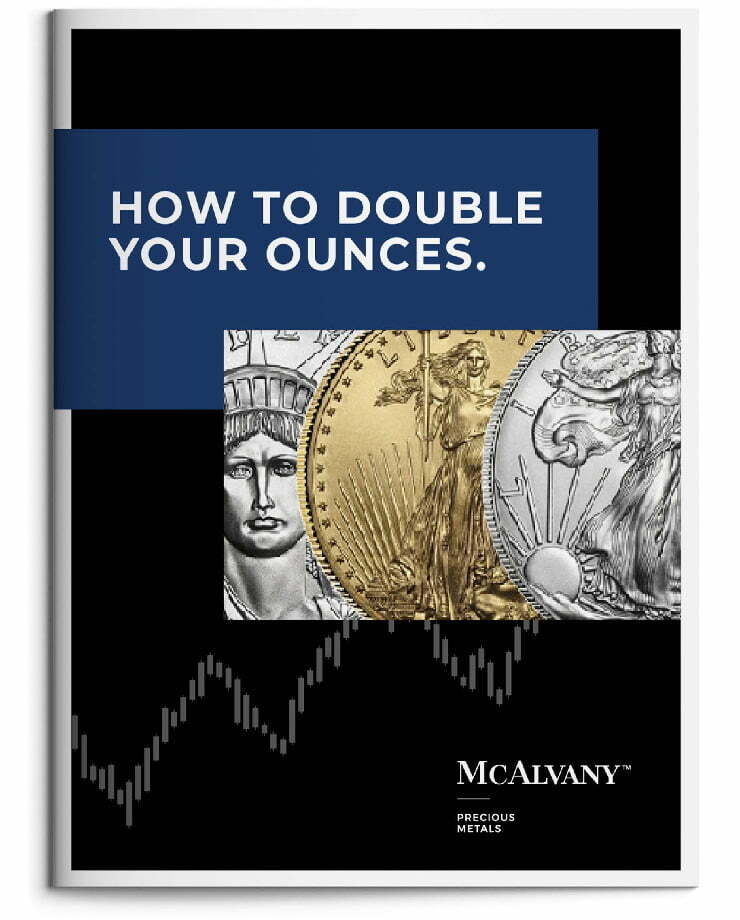“Bubbles are mechanisms of wealth redistribution and destruction – with detrimental consequences for social and geopolitical stability. Boom periods engender perceptions of an expanding global pie. Cooperation, integration, and alliances are viewed as mutually beneficial. But perceptions shift late in the cycle. Many see the pie stagnant or shrinking. A zero-sum game mentality dominates. Insecurity, animosity, disintegration, fraught alliances, and conflict take hold.”
A whirlwind first month for the “Disruptor in Chief,” such a monumental late-cycle figure and phenomenon. Campaign promises kept. Red meat for the MAGA and “nation saved” half. Affirmation for the “nation doomed” half. Unprecedented executive orders of overwhelming scope and consequence. Radical federal spending cuts and downsizing (enter photo of sunglass-donned Elon wielding his chainsaw at CPAC). The post-WWII global trade architecture in a jumble. WTO – along with traditional trade conventions and practices – on life support.
Relations with allies in disarray. The future of key international institutions, including the UN, WHO, NATO, is murky at best. A month in, the existing world order is increasingly in tatters. The world now waits anxiously to see if two autocratic strongmen can fashion a plan acceptable to Zelenskyy, Ukraine, and Europe – or whether Putin refocuses his attention on Kiev and beyond. Insecurity, animosity, disintegration, fraught alliances, and conflict. Disruption at the brink of chaos.
Fortunately, he spends most of his time these days on school work and music instead of gaming. But I was reminded this week of that ill feeling in my gut when I would see the vitriol and toxicity my son experienced playing video games. How these kids communicate with each other can be shocking. Anathema to traditional sportsmanship. Bereft of even a modicum of civility and decency, the impulse is often to goad hostility and malice. A microcosm of the degradation plaguing society and, increasingly, our international relations. Words matter. Civility and respect matter.
It sounds goofy and hopelessly out of touch, but I miss those “Choose Kindness” signs that used to be a fixture in our community. And if (politically incorrect) kindness has become far too much to ask, it seems like we could at least strive for respectful. Kind of civil, as the new ideal? Clearly, it won’t be coming from the top. This week’s posterity content:
“I think I have the power to end this war, and I think it’s going very well. But today I heard, ‘Oh, well, we weren’t invited.’ Well, you’ve been there for three years. You should have never started it. You could have made a deal.” President Trump, February 18, 2025
“We’ve seen this disinformation, we understand it comes from Russia. Unfortunately, President Trump — and we have great respect for him as a leader of people we also respect very much — he lives in this disinformation space.” Ukraine President Volodymyr Zelenskyy, February 19, 2025
“Think of it, a modestly successful comedian, Volodymyr Zelenskyy, talked the United States of America into spending $350 Billion Dollars, to go into a War that couldn’t be won, that never had to start, but a War that he, without the U.S. and ‘TRUMP,’ will never be able to settle. The United States has spent $200 Billion Dollars more than Europe, and Europe’s money is guaranteed, while the United States will get nothing back. Why didn’t Sleepy Joe Biden demand Equalization, in that this War is far more important to Europe than it is to us — We have a big, beautiful Ocean as separation. On top of this, Zelenskyy admits that half of the money we sent him is ‘MISSING.’ He refuses to have Elections, is very low in Ukrainian Polls, and the only thing he was good at was playing Biden ‘like a fiddle.’ A Dictator without Elections, Zelenskyy better move fast or he is not going to have a Country left. In the meantime, we are successfully negotiating an end to the War with Russia, something all admit only ‘TRUMP,’ and the Trump Administration, can do. Biden never tried, Europe has failed to bring Peace, and Zelenskyy probably wants to keep the ‘gravy train’ going. I love Ukraine, but Zelenskyy has done a terrible job, his Country is shattered, and MILLIONS have unnecessarily died – And so it continues…” President Trump, Truth Social, February 19, 2025.
“The idea that Zelenskyy is going to change the president’s mind by badmouthing him in public media… everyone who knows the President will tell you that is an atrocious way to deal with this administration.” vice president Vance, February 19, 2025
February 21 – Guardian (Miranda Bryant): “Elon Musk has become embroiled in a heated row with a Danish astronaut who criticised the tech billionaire’s claim that the former US president Joe Biden abandoned two American astronauts at the International Space Station on purpose. Andreas ‘Andy’ Mogensen accused Musk of lying when he claimed in a Fox News interview alongside Donald Trump that NASA’s Butch Wilmore and Suni Williams were left stranded for ‘political reasons’ by Biden. ‘What a lie. And from someone who complains about lack of honesty from the mainstream media,’ the 48-year-old European Space Agency astronaut, who has flown to the ISS twice, wrote on X. In response, Musk called Mogensen ‘fully retarded’.”
Unleashed a decade ago with “fat”, “pig” and “degenerate” Rosie O’Donnell, and later evolving into vile attacks on all political adversaries, disdain made an alarming escalation this week, with President Zelenskyy targeted as a “dictator” that has bilked the U.S. after starting the war.
The “world order” was significantly disrupted this week. By now, we Americans are used to the antics, theatrics, and shameless threats. I didn’t expect the emboldened “TRUMP” shtick to play well internationally – but never imagined how quickly it would go off the rails. Governor Trudeau and our 51st state. Panama’s President Jose Raul Mulino protesting the U.S. spread of “lies and falsehoods.” Gaza. A Wednesday essay from the Carnegie Endowment for International Peace: “The Death of the World America Made.” To be sure, the international view of U.S. global leadership has taken a dreadful turn for the worse.
February 19 – Politico (Nicholas Vinocur and Victor Goury-Laffont): “Forget NATO. Forget the EU. A new coalition of nations is emerging to deal with the greatest security crisis to hit Europe in decades, as President Donald Trump on Wednesday squarely aligned U.S. interests with the Kremlin’s by unleashing excoriating tirades against Ukrainian President Volodymyr Zelenskyy, whom he branded a ‘dictator.’ The new grouping is made up of all the countries that once saw themselves as indefectible allies of the United States, but are now questioning the very foundations of that relationship as Washington embraces Russia and ramps up its attacks against NATO allies. On Wednesday, French President Emmanuel Macron held a meeting with the leaders of the group… about how to respond to the new Trump world order. The group started taking shape this week in the wake of the Munich Security Conference… By Wednesday, that initial group — composed of the leaders of France, the United Kingdom, Poland, Germany, Italy, Spain, the Netherlands and Denmark, plus the heads of NATO, the European Commission and Council — had more than doubled, widening to 19 nations including Canada. Non-EU countries such as Norway and Iceland attended as well.”
For much of the world, certainly including our allies, the contrast of how President Trump has chosen to interface with the two war adversaries (Zelenskyy and Putin) has been too much to bear. It raises questions. The Telegraph’s Ambrose Evans-Pritchard: “But nobody expected it to end this badly and this suddenly. To watch an ally of 80 years turn on us with ferocity and blithely team up with our declared enemy really is the end of days.”
Ukraine War negotiations are not unfolding in a vacuum. The administration’s combative trade policies seem to be coalescing around April 2nd. The President announced major tariffs will be forthcoming on automobiles, semiconductors, and pharmaceuticals: “It’ll be 25% and higher, and it’ll go very substantially higher over a course of a year.” Agency reports on the reciprocal tariff regime are due April 1st. It appears a less than hospitable backdrop for negotiating trade deals.
Tariffs have become integral to various negotiations, with Wall Street too complacent about the critical role they’ll play in budget talks and the passage of “one, big, beautiful bill.”
February 20 – Bloomberg (Maria Luiza Rabello): “President Trump says ‘let’s give it a shot’ at balancing the budget. ‘Lots of money coming in from tariffs,’ he says in a post on Truth Social. Lutnick Says Trump’s Goal Is to Abolish IRS, Let Outsiders Pay.”
Question from Thursday’s daily White House press briefing: “So, Mr. Hassett, you were speaking about tariff revenue, and you also addressed a question about the IRS. President Trump has spoken about replacing income tax with tariff revenue, especially with all this waste, fraud, and abuse that we’re seeing cut. Is that a possibility?”
Director of National Economic Council Kevin Hassett: “Absolutely. And in fact, if you think about the China tariff revenue that we’re estimating is coming in from the 10% that we just added, plus the de minimis thing, that it’s between $500 billion and $1 trillion over 10 years, is our estimate. And that’s something that is outside of the reductions that markets are seeing through the negotiations up on the Hill. And, so, we expect that the tariff revenue is actually going to make it much easier for Republicans to pass a bill, and that was the President’s plan all along.”
I was ready to try to explain why financial markets had remained so calm in the face of unfolding disruption. Coincidence, perhaps, but the S&P500 dropped 2% in the two sessions following “dictator.” Friday Bloomberg headlines: “Stocks Finally Cave In to Fading Economic Fundamentals.” “Hard-to-Shock Markets Show Tolerance for Trouble Isn’t Limitless.” AP: “US Stocks Tumble as Companies and Consumers Worry About Tariffs and Washington.”
News and analysis predictably follow market direction. A crazy notion, indeed, but reality may even start to sink in. Tariffs are a problem. The current global backdrop does not support cooperation and compromise, whether the Ukraine war or trade disputes. Speculative markets face myriad uncertainties. Domestically, the tumble in University of Michigan Consumer Confidence to a 15-month low 65.2 (9 point 2-month drop) suggests Washington disruption could have near-term economic impact. Five-to-10 year inflation expectations rose to a 30-year high of 3.5%.
February 21 – Bloomberg (Devika Krishna Kumar): “US growth is likely to slow in the second half of the year as tariffs, tighter immigration laws and government cost-cutting efforts led by Elon Musk weigh on the economy, billionaire Steve Cohen said. The Point72 Asset Management founder… struck a bearish tone when asked about his outlook. He pointed to sticky inflation, slowing growth and the possibility of tit-for-tat tariffs as drags on the US economy. ‘I’m actually pretty negative for the first time in a while,’ Cohen said. ‘It may only last a year or so, but it’s definitely a period where I think the best gains have been had and wouldn’t surprise me to see a significant correction.’”
Steve Cohen: “Tariffs cannot be positive, okay? I mean, it’s a tax. On top of that, we have slowing immigration, which means the labor force will not grow as rapidly as… the last five years and so.”
One of the big hedge fund operators uttering the quiet part out loud. According to last August’s 13F filing, Point72 Asset Management had $172 billion of assets under management. One of the major levered fund groups, Cohen’s funds have not traditionally been “basis trade” players. But a “pretty negative” view implies a de-risking/deleveraging bias, in an environment that seems ripe for risk aversion and contagion. The hedge funds tend to move in crowds, creating vulnerability to abrupt positioning shifts and resulting market instability.
The S&P500 closed Wednesday’s session at a record high. Resilience in the face of serious unfolding and festering issues has been extraordinary. Then again, speculative Bubbles are notorious for disregarding deteriorating fundamentals. And for a multi-decade Bubble blow-off top, max disregard is par for the course. Economic and corporate earnings growth have been solid, and there’s always the specter of a magical life of AI, humanoid robots and such to keep the bullish imagination humming. But the real story is, as it always is in historic booms, in Credit.
Most importantly, Credit has been extraordinarily resilient. This resilience can be explained by perceived “moneyness.” Non-financial debt (NFD from Fed’s Z.1 report) expanded at a seasonally adjusted and annualized rate (SAAR) of $3.642 TN during Q3. This compares to 2007’s $2.534 TN – an annual record that held until pandemic 2020. Treasury debt expanded SAAR $2.261 TN during Q3, accounting for an extraordinary 62% of Q3’s growth in NFD (7.7% of Q3 GDP).
Despite historic over issuance, perceived safe and liquid money-like Treasury debt still enjoys insatiable demand. The unprecedented – and uninterrupted – expansion of federal IOUs has inflated system incomes and corporate earnings – bolstering growth, asset prices, and general debt performance. Years of strong economic activity and debt returns have been instrumental in the spectacular Bubble inflations throughout “private Credit” and “subprime” leveraged lending more generally.
A Friday Bloomberg headline: “Private Credit Mints Billionaires in Reshaping of Global Rich.” This historic Credit and speculative Bubble has been fundamental to late-cycle “blow-off” excess. Importantly, the consequences of the crucial interplay of two momentous Bubbles – “private Credit” and the highly levered Treasury “basis trade” – cannot be overstated. In short, the constancy of massive money-like debt issuance has validated a historic high-risk lending boom.
Certain the Fed will (again) use open-ended QE to maintain liquid/stable Treasury and “repo” markets, a group of powerful hedge fund players have levered “basis trades” 40 to 75 times. Financed in the perceived risk free “repo” market, levered Treasury, agency and MBS speculations have generated Trillions of marketplace liquidity. Liquidity overabundance has been fundamental to booming stocks, “private Credit,” leveraged lending, crypto, and the like.
When contemplating the consequences of booms financed by historic expansions of speculative Credit, think 2008 and 1929. Such booms are unstable and unsustainable. At some point, risk aversion spurs problematic deleveraging. Throughout both the “Roaring Twenties” and mortgage finance Bubble periods, there were scares, mini-crises, and policy-induced recoveries that fatefully extended “terminal phase excess.” The parabolic growth in speculative leverage dooms the cycle.
Daily, I monitored the late nineties “tech Bubble,” the mortgage finance Bubble, and the ongoing global government finance Bubble. I’ve witnessed historic excess and fretted historic systemic fragility. Yet a new degree of excess was unleashed over recent years, resulting in fragility that today goes far beyond anything I’ve ever seen or studied. The fearless leveraged speculating community operates confidently that the Fed and Trump administration have their backs. But all bets are off when they get spooked. An unexpected bout of de-risking/deleveraging has the potential to bring this party to a rapid conclusion. So much disruption and potential catalysts aplenty.
February 20 – Wall Street Journal (Aaron Zitner): “Elon Musk on Thursday offered hints about the work to come, including auditing the Federal Reserve, as his Department of Government Efficiency bulldozes through federal agencies in its effort to identify and implement budget and staffing cuts under authority from President Trump. Asked if he plans to audit the Federal Reserve, Musk said yes without offering elaboration.”
Federal Reserve oversight is the purview of Congress, not Elon’s DOGE. Recall Musk’s “The Fed is absurdly overstaffed” tweet following Powell’s December 18th “It’s a new phase and we’re going to be cautious about further cuts” press conference. Especially when markets begin to buckle, the administration will come down hard on Chair Powell. “See my chainsaw. I assume you’d rather not face amputation of half of your economists and staff.” At the top of Bloomberg Intelligence’s “most read” research this week: “Can Trump Fire Powell?”
February 21 – Reuters (Sam McKeith): “Australia accused China on Saturday of failing to give satisfactory reasons for what it called inadequate notice of a live-fire drill in waters between Australia and New Zealand that forced airlines to divert flights. Defence Minister Richard Marles said the government did not yet have ‘a satisfactory answer from China as to the question of the notice’ of the drills, which he has said was ‘disconcerting’ for commercial aviation.’”
February 21 – The Hill (Elizabeth Crisp): “Sen. Chris Coons said… a number of longtime U.S. allies in Europe are worried Russian President Vladimir Putin could be emboldened and look to ‘keep going’ into other countries if he’s seen as getting a free pass on Ukraine. Coons… said he’d had a number of discussions at a security conference this week in Germany where officials had relayed their fears. ‘All of them are alarmed — concerned — that giving Putin a free pass to roll over the rest of Ukraine will send a signal that President Trump no longer respects our commitment to NATO and that Putin will just keep going.’”
February 22 – Wall Street Journal (Nancy A. Youssef): “The Trump administration fired the military’s highest-ranking officer, the admiral leading the Navy, and several other senior Pentagon leaders in a massive shake-up of the top ranks of the armed forces. The firings began with an announcement by President Trump on Friday that he had removed the chairman of the Joint Chiefs of Staff, Air Force Gen. CQ Brown Jr…. Defense Secretary Pete Hegseth said he was ousting Adm. Lisa Franchetti, the first woman to lead the Navy and to be on the Joint Chiefs of Staff, and Gen. James Slife, the vice chief of staff for the Air Force. Hegseth also said he was planning to replace the top uniformed lawyers for the Army, Navy and Air Force. The firings were an unprecedented move to replace top uniformed officers in several branches of the armed services…”
February 21 – Wall Street Journal (Austin Ramzy): “The militaries of China and Russia, America’s top two global adversaries, are working together as never before in their long partnership, probing the defenses of the U.S. and its allies. The message to America from the growing partnership is that, if drawn into a military conflict, U.S. forces could find themselves confronting both countries. Chinese-Russian joint patrols and military exercises have become more frequent and increasingly assertive…”
February 21 – Politico (Chris Lunday): “Friedrich Merz, the front-runner to become Germany’s next chancellor, issued a stark warning on Friday that Europe must be prepared to defend itself without the U.S. ‘We must prepare for the possibility that Donald Trump will no longer uphold NATO’s mutual defense commitment unconditionally,’ Merz said… ‘That is why, in my view, it is crucial that Europeans make the greatest possible efforts to ensure that we are at least capable of defending the European continent on our own.’”
Impactful German elections Sunday. Suddenly, European governments will prepare for bond issuance necessary to fund a hike in defense spending and additional Ukrainian support. Stakes are high and rising for highly levered European bond markets. At home or abroad, a disrupted world is problematic for historically speculative and levered financial markets. There’s some irony in the hedge funds having so embraced the great disruptor.
For the Week:
The S&P500 fell 1.7% (up 2.2% y-t-d), and the Dow dropped 2.5% (up 2.1%). The Utilities rose 1.8% (up 6.6%). The Banks slumped 3.5% (up 5.2%), and the Broker/Dealers sank 4.3% (up 8.9%). The Transports fell 3.4% (up 0.9%). The S&P 400 Midcaps dropped 3.0% (down 0.6%), and the small cap Russell 2000 lost 3.7% (down 1.6%). The Nasdaq100 retreated 2.3% (up 2.9%). The Semiconductors declined 0.5% (up 3.1%). The Biotechs rallied 1.1% (up 7.2%). While bullion jumped another $54, the HUI gold index declined 1.6% (up 16.3%).
Three-month Treasury bill rates ended the week at 4.19%. Two-year government yields fell six bps to 4.20% (down 4bps y-t-d). Five-year T-note yields dropped five bps to 4.27% (down 11bps). Ten-year Treasury yields declined four bps to 4.43% (down 14bps). Long bond yields slipped two bps to 4.68% (down 10bps). Benchmark Fannie Mae MBS yields dropped eight bps to 5.65% (down 20bps).
Italian 10-year yields increased three bps to 3.55% (up 3bps y-t-d). Greek 10-year yields jumped eight bps to 3.31% (up 9bps). Spain’s 10-year yields added three bps to 3.10% (up 3bps). German bund yields rose four bps to 2.47% (up 10bps). French yields gained four bps to 3.22% (up 2bps). The French to German 10-year bond spread was little changed at 75 bps. U.K. 10-year gilt yields rose seven bps to 4.57% (unchanged). U.K.’s FTSE equities index declined 0.8% (up 6.0% y-t-d).
Japan’s Nikkei 225 Equities Index fell 1.0% (down 2.8% y-t-d). Japanese 10-year “JGB” yields jumped another seven bps to 1.43% (up 71bps y-t-d). France’s CAC40 slipped 0.3% (up 10.5%). The German DAX equities index declined 1.0% (up 11.9%). Spain’s IBEX 35 equities index was unchanged (up 11.7%). Italy’s FTSE MIB index rose 1.2% (up 12.4%). EM equities were mixed. Brazil’s Bovespa index declined 0.9% (up 5.7%), and Mexico’s Bolsa index slipped 0.6% (up 8.5%). South Korea’s Kospi jumped 2.5% (up 10.6%). India’s Sensex equities index declined 0.8% (down 4.1%). China’s Shanghai Exchange Index gained 1.0% (up 0.8%). Turkey’s Borsa Istanbul National 100 index dropped 2.8% (down 2.3%).
Federal Reserve Credit declined $7.1 billion last week to $6.760 TN. Fed Credit was down $2.130 TN from the June 22, 2022, peak. Over the past 284 weeks, Fed Credit expanded $3.033 TN, or 81%. Fed Credit inflated $3.949 TN, or 140%, over the past 641 weeks. Elsewhere, Fed holdings for foreign owners of Treasury, Agency Debt were little changed last week at $3.302 TN. “Custody holdings” were down $66.4 billion y-o-y, or 2.0%.
Total money market fund assets declined $9.6 billion to $6.914 TN. Money funds were up $779 billion over 30 weeks (22% annualized) and $900 billion y-o-y (15%).
Total Commercial Paper jumped $22.5 billion to a seven-month high $1.281 TN. CP has increased $193 billion y-t-d and $13.6 billion, or 1.1%, y-o-y.
Freddie Mac 30-year fixed mortgage rates dipped two bps this week to a two-month low of 6.85% (down 5bps y-o-y). Fifteen-year rates fell five bps to 6.04% (down 25bps). Bankrate’s survey of jumbo mortgage borrowing costs had 30-year fixed rates down three bps to 6.94% (down 43bps).
Currency Watch:
For the week, the U.S. Dollar Index was little changed at 106.612 (down 1.7% y-t-d). For the week on the upside, the Japanese yen increased 2.0%, the South Korean won 0.5%, the Swedish krona 0.4%, the British pound 0.4%, the New Zealand dollar 0.3%, the Singapore dollar 0.2%, the Swiss franc 0.1%, and the Australian dollar 0.1%. On the downside, the Brazilian real declined 0.6%, the Mexican peso 0.5%, the euro 0.3%, the Canadian dollar 0.3%, and the Norwegian krone 0.2%. The Chinese (onshore) renminbi increased 0.07% versus the dollar (up 0.65% y-t-d).
Commodities Watch:
February 17 – Reuters (Sherin Elizabeth Varghese): “Goldman Sachs… raised its year-end 2025 gold price forecast to $3,100 per ounce, up from $2,890, citing sustained central bank demand. The bank estimates that ‘structurally higher central bank demand will add 9% to the gold price by year-end, which combined with a gradual boost to ETF holdings as the funds rate declines.’”
February 17 – Financial Times (Leslie Hook and Ian Smith): “Gold has become the best performing ‘Trump trade’ in recent weeks…, as fears of a trade war and a potential hit to global growth fuel demand for the haven metal. Bullion has risen in price every week this year as Trump starts to impose sweeping tariffs, and hit a new record of $2,942.70 per troy ounce this week… ‘When trade contracts, gold takes off,’ said James Steel, precious metals analyst at HSBC… ‘The more tariffs that go on, the more this is going to disrupt world trade, and the better it will be for gold,’ he added. “
The Bloomberg Commodities Index added 0.9% (up 8.2% y-t-d). Spot Gold jumped 1.9% to $2,936 (up 11.9%). Silver added 1.1% to $32.457 (up 12.3%). WTI crude slipped 34 cents, or 0.5%, to $70.40 (down 2%). Gasoline dropped 3.0% (unchanged), while Natural Gas surged 13.7% to $4.234 (up 17%). Copper dropped 2.1% (up 15%). Wheat retreated 1.7% (up 7%), and Corn declined 1.0% (up 7%). Bitcoin lost $980, or 1.0%, to $96,460 (up 2.9%).
Trump Administration Watch:
February 19 – New York Times (Benjamin Oreskes): “President Trump is famous for his love of everything gold and other trappings that connote royalty… But in a post on his social media platform Truth Social…, Mr. Trump went a step further, likening himself to a king as he celebrated his administration’s move to kill New York City’s congestion pricing program. ‘CONGESTION PRICING IS DEAD. Manhattan, and all of New York, is SAVED,’ he wrote. ‘LONG LIVE THE KING!’ The White House then reinforced the message, recirculating it on Instagram and X with an illustration of Mr. Trump wearing a crown on a magazine cover resembling Time, but called Trump.”
February 19 – Associated Press (Michelle Gumede): “U.S. Secretary of State Marco Rubio will skip a two-day meeting of foreign ministers from the leading rich and developing nations that starts on Thursday after criticizing host South Africa’s policies as anti-American. Instead, Rubio was headed back to the United States… from his first trip to the Middle East as America’s chief diplomat, and after leading a U.S. delegation in talks with Russia in Saudi Arabia over the war in Ukraine.”
February 19 – New York Times (Alan Rappeport): “Treasury Secretary Scott Bessent will skip a meeting of finance ministers and central bankers from the Group of 20 nations in Cape Town next week…, deepening the rift between the United States and South Africa over policies the Trump administration believes are anti-American. The decision to forgo such a major economic gathering is highly unusual for a Treasury secretary, particularly one who was confirmed to his post three weeks ago.”
February 20 – Financial Times (Joe Miller): “Elon Musk has said US President Donald Trump backs his bid to distribute savings from a government cost-cutting drive directly to citizens, setting up a potential showdown with Republican deficit hawks. ‘I talked to the president and he is supportive of [the idea],’ Musk, who is the de facto leader of the so-called Department of Government Efficiency (Doge), told the Conservative Political Action Conference… ‘It sounds like that is something we are going to do.’ This week Musk seized on the idea of sending ‘Doge dividend cheques’ to Americans…”
February 19 – Axios (Neil Irwin): “For more than a century, Congress has entrusted many policy areas to agencies that the president does not directly control. President Trump seeks to change that with an executive order Tuesday night. The order claims direct presidential authority over the work of federal boards and commissions designed by Congress to operate without day-to-day oversight by the White House, with especially broad implications in the financial regulatory arena. The order, pending legal challenges, creates more White House control of agencies, including the FDIC, SEC and CFTC. It covers the Federal Reserve in its role as a regulator of the banking system but explicitly excludes the setting of monetary policy… Independent agencies are led by presidential appointees who share the president’s philosophy. But once installed, they are generally left to lead as they see fit… Trump seeks to upend all of that. The order states that these agencies’ ability to exercise independent authority ‘undermine such regulatory agencies’ accountability to the American people and prevent a unified and coherent execution of Federal law.’”
February 17 – New York Times (Alan Rappeport, Andrew Duehren and Nicholas Nehamas): “The top official at the Social Security Administration stepped down this weekend after members of Elon Musk’s so-called Department of Government Efficiency sought access to sensitive personal data about millions of Americans held by the agency, according to people familiar… The resignation of Michelle King, the acting commissioner, is the latest abrupt departure of a senior federal official who refused to provide Mr. Musk’s lieutenants with access to closely held data.”
February 18 – Bloomberg (Courtney Rozen): “The Trump administration is planning to lay off at least 40% of the workers at the federal agency that provides mortgage insurance on loans for people who otherwise wouldn’t qualify for one, according to two sources familiar… Federal officials are preparing to cut employees at the Federal Housing Administration, the office that helps certain homebuyers secure a loan if they can’t afford a down payment or have below-average credit scores, the sources said.”
February 18 – Axios (Erin Doherty): “President Trump told Axios’ Marc Caputo… that he will continue to restrict the Associated Press’ access to the White House ‘until such time as they agree that it’s the Gulf of America.’ Trump has targeted the AP, which has said it will continue to use the 400-year-old Gulf of Mexico instead of Trump’s preferred Gulf of America, as part of longstanding Republican complaints about the AP Stylebook’s language guides around race, gender, and immigration… ‘The Associated Press just refuses to go with what the law is and what has taken place, it’s called the ‘Gulf of America’ now,” Trump told Axios… ‘It’s not called the Gulf of Mexico any longer… We’re going to keep them out until such time they agree that it’s the Gulf of America.’”
February 20 – Bloomberg (Julie Fine and Brendan Case): “Ross Perot Jr., a billionaire Texas real estate developer and longtime Republican donor, said President Donald Trump’s tariff threats are emerging as a ‘big concern’ and forcing business leaders to think twice before approving investments. The uncertainty is prompting Perot to weigh putting a ‘tariff line’ in contracts for the industrial buildings he develops around the US. In other words, he would offer one price without tariffs and a higher one if Trump follows through on plans to slap trade duties on key goods such as steel and aluminum. ‘It’s inflationary and it’s confusing,’ Perot said…”
Trade War Watch:
February 19 – Bloomberg (Hadriana Lowenkron and Josh Wingrove): “President Donald Trump said he would likely impose tariffs on automobile, semiconductor and pharmaceutical imports of around 25%, with an announcement coming as soon as April 2, a move that would dramatically widen the president’s trade war. Trump has previously announced 25% tariffs on steel and aluminum that are set to take effect in March. Tuesday’s comments are his most detailed yet in specifying other sectors to be hit with fresh barriers if implemented. ‘I probably will tell you that on April 2, but it’ll be in the neighborhood of 25%,’ Trump told reporters… Asked about similar levies on pharmaceutical drugs and semiconductor chips, the president said: ‘It’ll be 25% and higher, and it’ll go very substantially higher over a course of a year.’ Trump said he wanted to give companies ‘time to come in’ before announcing new import taxes.”
February 20 – Bloomberg (Enda Curran and Jorge Valero): “The European Union is willing to work with the Trump administration on a deal that would lower tariffs for industrial goods and boost purchases of American exports like natural gas and soybeans, the bloc’s trade chief said. Europe is ready to look at lowering its taxes on US imports including autos, Maros Sefcovic, the EU commissioner for trade, told reporters… Sefcovic… said the car industry featured ‘to quite an extent’ in the discussions.”
February 15 – Wall Street Journal (Editorial Board): “President Trump is courting Chinese President Xi Jinping for a summit, and before he goes he might want to consult Adm. Sam Paparo, the head of U.S. Indo-Pacific Command. Adm. Paparo said this week that China’s ‘aggressive maneuvers around Taiwan right now are not exercises, as they call them. They are rehearsals’ for ‘the forced unification of Taiwan to the mainland.’ Two months ago Beijing practiced sealing off the First Island Chain, which runs from Japan south to Taiwan, the Philippines and Indonesia. The goal is to cut off Western support for Taiwan in a blockade or invasion. A military exercise in October 2024 was practice for a blockade. And in May 2024 China encircled Taiwan and practiced a sea assault and land attack, among other operations.”
February 19 – Bloomberg (Hadriana Lowenkron): “US President Donald Trump said it would be possible to reach a fresh trade deal with China, signaling he is open to heading off a brewing trade fight between Washington and Beijing. ‘It’s possible, it’s possible,’ Trump told reporters… Trump did not describe the parameters of a potential deal, and any agreement would face significant obstacles… Trump has ratcheted up pressure on China with an additional 10% tariff on all imports from the country… The president nonetheless heaped praise on Chinese President Xi Jinping, but once again did not say if or when they would speak directly. ‘There’s a little bit of competitiveness, but the relationship I have with President Xi is, I would say, a great one,’ Trump said.”
Budget Watch:
February 19 – Bloomberg (Erik Wasson): “President Donald Trump backed a House budget plan calling for a $4.5 trillion tax cut, slapping back Senate Republicans’ efforts to rush through funds to help bolster his immigration crackdown in favor of a larger bill that will likely take months to negotiate. Trump intervened in the ongoing budget conflict between House and Senate Republicans with a social media post… just before a key congressional vote. The Senate plans to vote this week on a budget that would add $150 billion to military spending and increase immigration and border enforcement by $175 billion… Trump instead endorsed a more sweeping House budget plan that raises internecine Republican conflicts over how much to cut federal spending and how large a tax cut should be.”
February 19 – Wall Street Journal (Siobhan Hughes and Lindsay Wise): “Senate Republicans said they would stick with their plan to vote on a narrow part of President Trump’s agenda focused on border security and military spending, brushing off his comments that he favored a broader approach led by House Republicans. Senate Majority Leader John Thune said the Senate’s budget blueprint… would give Trump another way to enact his domestic agenda, positioning it as a backup plan if the broader House package stalls… Trump… had thrown cold water on the budget blueprint devised in the Senate under Budget Committee Chairman Lindsey Graham and said that the House approach was preferable because it ‘implements my FULL American First Agenda, EVERYTHING, not just parts of it!’ He said he wanted all of his legislative priorities to advance in a single ‘big, beautiful bill’… ‘I didn’t see that one coming,’ Thune told reporters…”
February 19 – Associated Press (Lisa Mascaro and Kevin Freking): “Back on track, Senate Republicans pushed ahead… with their $340 billion budget bill focused on funding the White House’s mass deportations and border security agenda after Vice President JD Vance gave a green light to proceed despite a morning dust-up caused by President Donald Trump… ‘We are moving forward,’ said Sen. John Barrasso of Wyoming, the GOP whip, after a lunch meeting with Vance at the Capitol. ‘Foot on the gas, moving forward.’”
February 18 – Associated Press (Amanda Seitz, Andrew DeMillo and Kevin Freking): “Republicans are weighing billions of dollars in cuts to Medicaid, threatening health care coverage for some of the 80 million U.S. adults and children enrolled in the safety net program. Millions more Americans signed up for taxpayer-funded health care coverage like Medicaid and the Affordable Care Act’s marketplace during the Biden administration… But Republicans, who are looking to slash federal spending and offer lucrative tax cuts to corporations and wealthier Americans, now see a big target ripe for trimming. The $880 billion Medicaid program is financed mostly by federal taxpayers, who pick up as much as 80% of the tab in some states.”
Ukraine War Watch:
February 18 – Financial Times (Felicia Schwartz, Max Seddon, Polina Ivanova, and Christopher Miller): “Russia and the US have agreed to ‘lay the groundwork for future co-operation’ on ending the Ukraine war and a lightning normalisation of relations, after their first high-level talks since President Vladimir Putin’s invasion. Following four-and-a-half hours of negotiations in Riyadh…, the US state department said the two sides would appoint ‘high-level teams’ to seek to end the war and establish a diplomatic channel to resolve bilateral issues. The talks marked an extraordinary turn of events after US President Donald Trump called Putin last week in an effort to end the war — without consulting Ukraine or its European allies.”
February 19 – Financial Times (Christopher Miller, Max Seddon and Steff Chávez): “Donald Trump has called Ukrainian President Volodymyr Zelenskyy a ‘dictator’ and warned that he ‘better move fast or he is not going to have a Country left’, in a deepening rift between Washington and Kyiv. The US president hit out at his Ukrainian counterpart in a post on his Truth Social platform on Wednesday, hours after Zelenskyy accused Trump of living in a ‘disinformation bubble’ and disputed his $500bn bill for aid to the war-torn country… Making his most overt threat yet to end the war on terms favourable to Moscow, Trump wrote: ‘A Dictator without Elections, Zelenskyy better move fast or he is not going to have a Country left.’ He added Zelenskyy, whom he described as ‘a modestly successful comedian’, had ‘talked the United States of America into spending $350 Billion Dollars, to go into a War that couldn’t be won’.”
February 20 – Wall Street Journal (Daniel Michaels and Nancy A. Youssef): “President Trump’s tirades against Ukraine and the start of peace talks between the U.S. and Russia have come as painful blows to America’s closest allies, raising profound questions about whether the NATO alliance can survive. American and European supporters of the 32-country military bloc say that by siding with Europe’s longstanding adversary, Trump has done serious damage to its greatest asset: the deterrence that comes from the alliance’s ironclad commitment to collective defense. The North Atlantic Treaty Organization, formed at the Cold War’s dawn to face down threats from Moscow, is based on the principle that countries sworn to protect each other—with nuclear weapons, if necessary—are stronger together than separately. ‘The first time one NATO member thinks the others won’t defend it, that’s the beginning of the end,’ said Peter Bator, a former ambassador to NATO of the Slovak Republic.”
February 20 – Axios (Dave Lawler): “President Trump was not the first U.S. president or major Western leader to rail against a ‘dictator’ for launching the war in Ukraine — but he was the first to mean Volodymyr Zelensky, not Vladimir Putin. It’s hard to overstate how quickly and wildly Trump’s foreign policy deviated from former President Biden’s… Before even taking office, Trump threatened to seize the Panama Canal and Greenland. He later stunned Middle Eastern leaders and his own advisers by laying claim to the Gaza Strip to construct a U.S.-owned Riviera. He’s repeatedly insisted Canada become the 51st U.S. state… Trump’s expansionist urges, like his tariffs threats, have lent his first month the feel of raw but unfocused American power. His territorial demands may fade away, or narrow considerably (negotiating lower canal transit fees from Panama, say). But they’re fueling a global sense that Trump’s America is to be feared — including by allies. Nothing has alarmed America’s longtime European partners so much as his treatment of Zelensky…”
February 20 – Bloomberg (Aliaksandr Kudrytski, Volodymyr Verbianyi, and Kateryna Chursina): “To some in Kyiv, Donald Trump’s flurry of jabs directed at Volodymyr Zelenskiy may have been intended to make the Ukrainian president and his country more malleable. If so, they haven’t quite landed on a defiant population hardened by war. But the US president’s pivot to Russia is still unsettling for Ukrainians bracing for whatever is to come without the world’s superpower at their back. ‘Trump’s statements on Ukraine are like the ravings of a madman — everything is turned upside down,’ said Kyiv pensioner Alla Lesina, 65. ‘I would like to hope that America is not only Trump, but for now the hope is very illusory.’”
February 20 – Bloomberg (Daryna Krasnolutska): “As they prepare to mark three years of full-scale war with Russia, Ukrainians are watching in shock and fury as their main ally turns its back on them and fulfils Vladimir Putin’s wildest dreams. US President Donald Trump has brought Putin out of isolation, blamed Ukraine’s Volodymyr Zelenskiy for the war, and signaled he wants a deal with Moscow over Kyiv’s head. Yesterday he went further, labeling Zelenskiy a ‘dictator.’ Trump’s parroting of Kremlin narratives and disinformation is so far rallying Ukrainians behind Zelenskiy. European leaders including Emmanuel Macron of France and Britain’s Keir Starmer called with their support. To German Vice Chancellor Robert Habeck, Trump’s comments were ‘like George Orwell, where truth becomes lies and lies become truth.’”
February 17 – Bloomberg (Ania Nussbaum, Anna Edwards and Caroline Connan): “France’s minister for European affairs said joint European bonds should be discussed in the coming days to ramp up defense funding for the bloc as it tackles an ‘existential moment’ over Ukraine and the continent’s wider security. Benjamin Haddad spoke… ahead of a meeting of European leaders convened by President Emmanuel Macron in Paris for urgent talks on Ukraine. ‘What happens in Ukraine is of existential importance to the future of Europe, to the future of European security,’ said Haddad. ‘This is a moment also to think about how we can fund stepping up on our security.’”
February 19 – Financial Times (Henry Foy): “EU capitals have agreed a fresh sanctions package against Russia, as Brussels vows to step up pressure on Moscow and increase its support for Kyiv, widening a transatlantic divide with US President Donald Trump as he pushes for a rapid end to the war in Ukraine. The new measures targeting Russia’s aluminium and oil exports come as Brussels fears Trump could ease US sanctions on Moscow as part of a peace deal struck with President Vladimir Putin without Europe’s involvement.”
Taiwan Watch:
February 16 – Reuters (Ben Blanchard): “The U.S. State Department has removed a statement on its website that it does not support Taiwan independence, among changes that the island’s government praised… as supporting Taiwan. The fact sheet on Taiwan retains Washington’s opposition to unilateral change from either Taiwan or from China… But as well as dropping the phrase ‘we do not support Taiwan independence’, the page has added a reference to Taiwan’s cooperation with a Pentagon technology and semiconductor development project and says the U.S. will support Taiwan’s membership in international organisations ‘where applicable’.”
February 16 – Bloomberg (Karishma Vaswani): “One phone call does not a treaty make, but President Donald Trump’s conversation with Russia’s Vladimir Putin on ending the war in Ukraine is worrying Taiwan. China will watch developments for any hint on whether a resolution spells a similar future for the self-ruled island Beijing claims as its own. Taiwan’s President Lai Ching-te’s government should consider what it can offer Trump to avoid becoming a pawn in the US-China rivalry. It’s a delicate balance: Appeasing the US leader doesn’t only mean figuring out what he wants, but interpreting how American policy toward the island might be changing.”
Market Instability Watch:
February 16 – Bloomberg (Esha Dey): “Wall Street has been guessing ‘will he or won’t he’ on tariffs since President Donald Trump took office last month promising sweeping levies on geopolitical allies and rivals alike. While the initial reaction in the stock market was caution, the mood is shifting as the administration’s policies become increasingly muddled with delays and exclusions mixing with bellicose rhetoric. What’s an investor to do? So far, they’ve been ignoring the noise and buying stocks.”
Global Credit and Financial Bubble Watch:
February 20 – Bloomberg (Christopher Anstey, Jonathan Ferro, Annmarie Hordern and Lisa Abramowicz): “Treasury Secretary Scott Bessent said that any move to boost the share of longer-term Treasuries in government debt issuance is some ways off, given current hurdles that include elevated inflation and the Federal Reserve’s quantitative tightening program. ‘That’s a long way off, and we’re going to see what the market wants,’ Bessent said… when asked about ‘terming out’ sales of US Treasuries sales. ‘It’s going to be path dependent.’ Before he came into office, Bessent had repeatedly criticized then-Treasury Secretary Janet Yellen for boosting the share of bills…”
February 19 – Financial Times (Arjun Neil Alim, Cheng Leng and Harriet Clarfelt): “China’s holdings of Treasuries have fallen to their lowest level since 2009, as Beijing holds more of its US government bonds through lower-profile accounts and diversifies into alternative assets. The value of US sovereign debt held by Chinese investors fell by $57bn to $759bn in 2024… This does not include Chinese-owned Treasuries held in accounts in other countries.”
February 17 – Financial Times (Stephen Gandel): “Companies are falling behind on loan repayments at the highest rate in nearly eight years and credit analysts worry that tariffs could further stretch the finances of corporate America… Corporate bank loans, unlike other types of debt, tend to be variable rate, meaning they move with interest rates. US business borrowers were at least one month late on more than $28bn in bank debt at the end of 2024, up $2.2bn in the final three months of the year and $5.4bn from a year earlier, according to… BankRegData. The data does not include loans from direct lenders and private credit funds, which are an increasingly bigger portion of corporate lending.”
February 20 – Wall Street Journal (Paul Hannon): “The European Central Bank is following moves to loosen regulation of the U.S. financial system with ‘concern,’ a senior official told European lawmakers… Trump administration officials are discussing plans to curtail and combine the power of banking regulators, and have already taken aim at one financial regulator, the Consumer Financial Protection Bureau. Speaking to the European parliament, the first vice-chair of the European Systemic Risk Board said it was ‘monitoring’ those changes. ‘The new U.S. Administration is establishing new priorities, including significant deregulation of the financial system,’ said Olli Rehn, who is also governor of Finland’s central bank. ‘We are vigilantly assessing its implications and the potential risks to the EU financial sector.’”
February 19 – Financial Times (Ian Smith): “Europe’s plan to spend more on its defence has fuelled a rise in countries’ long-term borrowing costs, investors say, adding to expectations that they will increase debt issuance. Long-term borrowing costs for big economies such as Germany and the UK have been rising in recent months, driven partly by expectations of more sovereign debt supply. Bets on increased defence spending have provided the latest catalyst, as US President Donald Trump pushes to end the Ukraine war and warns the region that it has been underpaying for its security… ‘Higher deficits are coming, with the need to grow defence spending,’ said Mark Dowding, chief investment officer for fixed income at RBC BlueBay Asset Management.”
February 17 – Bloomberg: “A selloff in China’s bonds extended into a fifth day amid signs investors are shifting some funds to stocks and seeking out higher yields in the short-term money market. Sovereign yields had slumped to record lows… Now respite from tariff headlines, a rally in local shares and tightening cash conditions are threatening this dynamic. The yield on China’s benchmark 10-year bond rose to 1.73% on Tuesday, the highest since December…”
February 18 – Bloomberg (Finbarr Flynn): “Japan’s corporate bond market is booming, as an economic rebound and plans to get ahead of higher interest rates encourage a flurry of issuance. Japanese companies have sold 14.7 trillion yen ($96.8bn) of local-currency bonds in the current fiscal year, a record for the period…”
February 18 – Bloomberg (Immanual John Milton): “Ticket sales to sporting events could become collateral for the next type of debt securitization, according to a… note from Academy Securities… Private equity firms are buying stakes in sports teams more frequently, at the same time that more stadiums are being built or renovated. That dual dynamic should fuel sales of debt backed by sports facilities, which include ticket sales, and other sports-linked debt, according to Stav Gaon, a strategist at Academy.”
AI Bubble Watch:
February 20 – Bloomberg (Dave Sebastian): “The stars are aligned for Chinese technology companies to boost stock financing, capitalizing on a DeepSeek-driven $1 trillion rally and Beijing’s perceived softer stance on the once-battered sector. This week, robot maker UBTech Robotics Corp., chipmaker Black Sesame International Holding Ltd. and AI drug-discovery company XtalPi Holdings Ltd. said they were raising as much as a HK$4.2 billion ($546 million) from share placements…”
Bubble and Mania Watch:
February 17 – Financial Times (Editorial Board): “Two years ago, the US was on the brink of its most serious set of bank failures since the financial storm of 2008. A clutch of regional banks, some the size of Europe’s larger lenders, hit the skids, including Silicon Valley Bank, whose demise came close to sparking a full-blown crisis. SVB’s crash had several immediate causes. Its bond holdings were crumbling in value as US interest rates pushed higher… The swift crisis-cauterising skills regulators forged in the fire of 2008 helped avert a broader financial contagion. The grim episode should loom large in the minds of US President Donald Trump’s trigger-happy, anti-regulation financial sheriffs. After all, the US Federal Reserve identified the lighter supervisory burden placed on smaller banks like SVB in his first term in 2018 as a key ingredient in its failure.”
February 18 – Bloomberg (Sagarika Jaisinghani): “Global stocks have become the most popular asset class with investors, who are showing the biggest willingness to take risk in 15 years, according to a survey by Bank of America… Fund managers’ cash levels fell to the lowest since 2010, while 34% of participants said they expect world equities to be the best-performing asset in 2025… A net 11% indicated they were underweight bonds. Investors are ‘long stocks, short everything else,’ strategist Michael Hartnett wrote… The bullishness was underpinned by expectations of robust economic growth and lower US interest rates this year, he said.”
February 19 – Bloomberg (Alexandra Semenova): “A flood of retail investor cash into the most speculative corners of the stock market should be a warning for US equity bulls, according to Morgan Stanley Investment Management’s Andrew Slimmon. ‘What keeps me up at night the most is this retail frenzy into euphoric stocks,’ the senior portfolio manager… said… ‘Euphoria is the tail end of a bull market, and we’re moving too quickly through the optimism phase’… Individual investors’ exposure to stocks is in the 96th percentile in data going back to 1997 as of the end of January, according to… Barclays’ equities tactical strategies division… Sentiment across that group has also reached the highest on record…”
February 19 – Bloomberg (Kara Carlson, Dorothy Ma and David Welch): “Nikola Corp. filed for bankruptcy, culminating a long decline for the onetime darling of the electric-vehicle industry, which grappled with weak sales and cycled through CEOs in the wake of a fraud scandal. The company is exploring a sale of its assets after entering Chapter 11… In court documents, it listed total funded debt and lease obligations of $98 million.”
U.S./Russia/China/Europe Watch:
February 19 – Reuters (Matt Spetalnick): “When Russian President Vladimir Putin launched his invasion of Ukraine nearly three years ago, then-U.S. President Joe Biden took a firm stand in solidarity with Kyiv, forged a bulwark of European allies and set veteran advisers to the task of isolating Moscow economically and diplomatically. Washington’s approach changed dramatically with this week’s initial high-level talks between the U.S. and Russia and took an even more ominous turn when Trump…, then blamed Kyiv for starting the war and called Ukrainian President Volodymyr Zelenskiy a ‘dictator without elections.’ The senior negotiators met in Riyadh…, with Ukraine and NATO partners sidelined by a relatively inexperienced team of Trump aides and Putin granted concessions even before the talks got under way. Trump’s rush to impose an end to Russia’s war in Ukraine… has stoked fears of a peace deal with Putin that could undermine Kyiv and Europe’s security and alter the geopolitical landscape.”
February 18 – Bloomberg (Iain Marlow): “Top officials from the US and Russia met for a first round of talks over the war in Ukraine and raised the possibility of broader cooperation, signaling President Donald Trump desire to reboot a battered relationship. The two sides ended more than four hours of negotiations in the Saudi capital Riyadh… with a pledge to appoint high-level teams to work toward ending the conflict ‘as soon as possible in a way that is enduring, sustainable and acceptable to all sides,’ the US State Department said. The US raised the possibility of lifting the raft of sanctions it’s aimed at Russia. They also agreed to work toward boosting staff at their embassies, addressing other ‘irritants’ in the relationship and paving the way for more cooperation. Although the talks were preliminary, that attitude suggested the US was already looking beyond the war and toward meeting Trump’s long-held desire of boosting ties with Russia’s President Vladimir Putin.”
February 17 – Financial Times (Gideon Rachman): “When JD Vance took the stage at the Munich Security Conference last week, he issued a stern warning. The US vice-president told the assembled politicians and diplomats that free speech and democracy are under attack from European elites: ‘The threat I worry the most about vis-à-vis Europe is not Russia, it’s not China, it’s… the threat from within.’ If Vance hoped to persuade his audience, rather than simply insult it, he failed. Indeed, his speech backfired spectacularly, convincing many listeners that America itself is now a threat to Europe. In the throng outside the conference hall, a prominent German politician told me: ‘That was a direct assault on European democracy.’ A senior diplomat said: ‘It’s very clear now, Europe is alone.’ When I asked him if he now regarded the US as an adversary, he replied: ‘Yes.’”
De-globalization Watch:
February 17 – Wall Street Journal (Liza Lin): “For a growing number of Western tech companies, ‘Anything But China’ is the order of the day. In recent years, many multinationals decided they had become overreliant on suppliers in China, prompting them to pursue a so-called ‘China Plus 1’ strategy of augmenting China-based suppliers with those in other countries. Now, with U.S.-China tensions soaring again, many tech businesses are accelerating moves to shift production out of China and look for suppliers elsewhere, signifying a global tech world that is increasingly bifurcated between the two powers. ‘Everybody is trying to look for an alternative to China,’ said Wong Siew Hai, the head of the Semiconductor Industry Association in Malaysia… ‘Companies are redesigning their business. There’s no more ‘just-in-time’ strategy. Some people call this new strategy ‘just in case.’’”
February 18 – Reuters (Ernest Scheyder, Lewis Jackson, Melanie Burton and Amy Lv): “A Chinese company has stopped exporting a piece of equipment used to process the electric vehicle battery metal lithium, in the clearest sign yet manufacturers are already implementing export controls proposed by Beijing. Jiangsu Jiuwu Hi-Tech told customers last month it would stop exporting a piece of filtration equipment known as a sorbent from February 1… China is the world’s largest producer of sorbents, used to extract lithium from brines or other solutions containing the battery metal…”
February 20 – Financial Times (Harry Dempsey): “Japanese officials and executives say China’s escalation of export controls on semiconductor raw materials is threatening global electronics supply chains. Beijing tightened export controls on gallium, germanium, antimony and so-called super-hard materials in December by banning their export to the US ‘in principle’ because they have dual-uses in civilian and military technology. China had already been throttling supplies to Japan, a US ally, for 18 months.”
Inflation Watch:
February 16 – Telegraph (James Titcomb): “The boss of one of the world’s biggest computer makers has said he is putting prices up by 10% as a direct result of Donald Trump’s tariffs. Jason Chen, the chief executive and chairman of Acer, said the US price increase on laptops made in China would happen ‘by default’ and apply from next month. However, he said he would consider shifting manufacturing out of China, including to the United States.”
February 19 – Bloomberg (Tom Rees, Philip Aldrick and Irina Anghel): “UK inflation climbed to the highest level in 10 months in January, boosted by the cost of airfares, motor fuel, food and the imposition of value-added tax on private school fees. Consumer prices increased 3% from a year earlier, accelerating from a 2.5% pace in December…”
Federal Reserve Watch:
February 20 – Reuters (Howard Schneider): “St. Louis Fed President Alberto Musalem… raised the twin risks of rising inflation expectations and difficult-to-address stagflation, in remarks that highlighted the potentially difficult choices facing the U.S. central bank. While many of his colleagues say they regard inflation expectations as anchored, Musalem said he was concerned recent data showed they may be rising – a development that might force the Fed onto a more restrictive path. ‘In the current environment, the stakes are higher than they would be if inflation was at or below target,’ Musalem said… ‘The risk that inflation expectations could become unanchored is higher than it would be if the economy was operating with slack and if consumers and businesses had not recently experienced a period of high inflation.’”
February 17 – New York Times (Colby Smith): “As President Trump’s efforts to restructure the global trade system with expansive tariffs begin to take shape, one question continues to dog officials at the Federal Reserve: How will these policies affect the central bank’s plans to lower interest rates? One influential Fed governor made clear on Monday that he did not expect Mr. Trump’s policies to derail the Fed’s efforts to get inflation under control, suggesting instead that fresh interest rate cuts are still in play this year. ‘My base-line view is that any imposition of tariffs will only modestly increase prices and in a nonpersistent manner,’ Christopher J. Waller, the official, said… ‘So I favor looking through these effects when setting monetary policy to the best of our ability.’”
U.S. Economic Bubble Watch:
February 20 – Associated Press (Matt Ott): “Slightly more Americans applied for jobless benefits last week, but layoffs remained in the same recent healthy range. The number of Americans filing for jobless benefits rose by 5,000 to 219,000 for the week ending Feb. 15… Analysts projected that 215,000 new applications would be filed… The total number of Americans receiving unemployment benefits for the week of Feb. 8 rose to 1.87 million, an increase of 24,000 from the previous week.”
February 19 – Reuters (Lucia Mutikani): “U.S. single-family homebuilding fell sharply in January amid disruptions from snowstorms and freezing temperatures, with a rebound likely to be limited by higher costs from tariffs on imports and elevated mortgage rates… Single-family housing starts… dropped 8.4% to a seasonally adjusted annual rate of 993,000 units last month… Single-family starts declined 1.8% year-on-year. Despite a national housing shortage, higher borrowing costs and tariffs on raw materials, including lumber and appliances, are a constraint for builders. New home construction is heavily reliant on imported materials.”
February 19 – CNBC (Diana Olick): “Mortgage rates dipped slightly last week, but so did mortgage demand, as housing affordability continues to sideline potential buyers. Total mortgage application volume fell 6.6% for the week… Applications for a mortgage to buy a home fell 6% for the week but were 7% higher year over year. Housing affordability continues to weigh on potential buyers, and economic uncertainty, especially regarding the effect of potential tariffs, are only adding to the pressure.”
February 18 – CNBC (Diana Olick): “Sentiment among the nation’s single-family homebuilders dropped to the lowest level in five months in February, largely due to concern over tariffs, which would raise their costs significantly. The National Association of Home Builders’ Housing Market Index, or HMI, dropped a sharp 5 points from January to a reading of 42… Last February, the index stood at 48… Of the index’s three components, current sales conditions fell 4 points to 46, buyer traffic fell 3 points to 29 and sales expectations in the next six months plunged 13 points to 46. That last component hit its lowest level since December 2023.”
February 15 – Yahoo Finance (Claire Boston): “Borrowers who got home loans through government-backed programs are increasingly falling behind on their payments… Delinquency rates on Federal Housing Administration and Veterans Affairs loans reached 11.03% and 4.7%, respectively, at the end of last year…, breaching pre-pandemic levels… Conventional mortgage delinquencies are creeping up too, but much more slowly. At 2.62%, they remain below pre-pandemic levels and near historical lows.”
China Watch:
February 20 – Bloomberg: “China’s ramp-up in liquidity injections has failed to alleviate a squeeze in the money market, keeping borrowing costs elevated. The People’s Bank of China added a net 84 billion yuan ($11.6bn) of short-term funds in daily open market operations on Friday… That’s the largest single-day infusion so far in February… Money market rates barely budged following the action, underscoring the intensity of liquidity tightness. The seven-day repo rate gained 14 bps to 2.2%, while the overnight repo rate hovered near an eight-month high touched earlier this week.”
February 18 – Reuters (Liangping Gao and Ryan Woo): “China’s new home prices stalled in January…, suggesting declining demand in the crisis-hit property sector is struggling to find a floor despite continued government efforts to prop up sentiment. Prices were unchanged month-on-month…, marking the second straight month of no growth. On a year-on-year basis, new home prices fell 5.0%, narrowing a 5.3% drop the previous month.”
February 17 – Financial Times (Ryan McMorrow, Eleanor Olcott and Arjun Neil Alim): “President Xi Jinping has told top Chinese entrepreneurs including Alibaba’s Jack Ma that the private sector has ‘great potential’ and has pledged a series of measures to improve the country’s business environment. Ma’s attendance on Monday at Xi’s first high-profile meeting with private entrepreneurs in several years was a clear signal that China’s most famous entrepreneur had been rehabilitated after becoming the most prominent victim of a government crackdown on the tech sector in 2020. Analysts said the meeting also signalled Beijing’s desire to present a more positive disposition towards the battered private sector.”
February 18 – Reuters (Ellen Zhang and Ryan Woo): “China’s top financial regulator vowed it will maintain stable and effective credit supply to private firms and will step up support for their loans… The National Financial Regulatory Administration also said they will meet the reasonable financing needs of various real estate enterprises, including private housing enterprises. The pledges came after a rare meeting held by President Xi Jinping with some of the country’s biggest private companies…”
Central Bank Watch:
February 19 – Financial Times (Olaf Storbeck): “A top European Central Bank official has signalled that rate-setters could be almost done with interest rate cuts in the Eurozone, warning risks to inflation were increasingly becoming ‘skewed to the upside’ while borrowing costs had eased a lot… ECB hawk Isabel Schnabel, a member of the six-person executive board that sets the tone for rate meetings, told the Financial Times that the central bank should ‘now’ start to debate a ‘pause or halt’ to rate cuts. The remarks highlight rising tensions within the ECB over the economic outlook and mark the strongest sign yet that some of the 26 members of the governing council believe that they soon need to slow down — or even stop — rate cuts.”
February 18 – Reuters (Stella Qiu and Wayne Cole): “Australia’s central bank cut rates for the first time in more than four years on Tuesday but warned it was too early to declare victory over inflation and was cautious about the prospects of further easing… Wrapping up its February policy meeting, the Reserve Bank of Australia (RBA) cut the cash rate by a quarter-point to 4.1%, the first reduction since November 2020 when the pandemic crisis saw rates slashed to an all-time low of 0.1%.”
February 18 – Bloomberg (Tracy Withers): “New Zealand’s central bank will slow the pace of interest-rate cuts after a third straight reduction of 50 bps, saying lower borrowing costs should begin to stoke an economic recovery. The Reserve Bank’s Monetary Policy Committee lowered the Official Cash Rate to 3.75% from 4.25%…”
Europe Watch:
February 18 – Politico (Gordon Repinski and Nette Nostlinger): “Friedrich Merz, Germany’s likely next chancellor, told POLITICO he’s ‘very worried’ the European Union is heading for another financial crisis because governments have taken on too much debt. ‘We cannot be as careless with our public finances as perhaps some of the others — and even with others, I’m starting to get very worried,’ the conservative front-runner told POLITICO… He didn’t name the other countries he was talking about but six in the EU — France, Italy, Greece, Belgium, Spain and Portugal — have debt that’s bigger than the size of their yearly economic output.”
February 17 – Reuters (Balazs Koranyi): “Germany is particularly vulnerable to U.S. trade tariffs, which could curb growth for years to come and hold back an economy already suffering through two straight years of contraction, Bundesbank President Joachim Nagel said… Germany, Europe’s largest economy, has been in a deep industrial recession, due in great part to subsidised Chinese output crowding out German products at a time when soaring energy costs at home are already weighing on competitiveness… ‘Our strong export orientation makes us particularly vulnerable,’ Nagel said… ‘Economic output in 2027 would be almost 1.5 percentage points lower than forecast,’ he added.”
Japan Watch:
February 21 – Wall Street Journal (Megumi Fujikawa): “Bank of Japan Gov. Kazuo Ueda on Friday promised to respond to abnormal rises in bond yields, as expectations for monetary tightening sent Japanese government bond yields to multiyear highs. ‘In exceptional cases where long-term interest rates rise sharply in a way somewhat different from normal movements, we will flexibly increase purchases of government bonds to promote stable formation of interest rates in the market,’ Ueda told a parliamentary committee.”
February 18 – Wall Street Journal (Megumi Fujikawa): “The Bank of Japan needs to keep adjusting the degree of monetary accommodation, policy board member Hajime Takata said…, as he warned about the risk of inflation climbing too high… ‘It is important to shift gears gradually—even after the additional interest-rate hike in January—to avoid the risks of price upswings and financial overheating from becoming a reality,’ Takata said…”
February 16 – New York Times (River Akira Davis and Hisako Ueno): “For decades in Japan, it was accepted as gospel: A weak currency makes companies more competitive and bolsters the economy. Part of that promise came true last year: As the yen tumbled to a 37-year low against the dollar, big brands like Toyota Motor reported the highest profits in Japanese history. Stocks soared to record highs. Yet for the majority of Japanese households, the weakened yen has done little more than drive up the costs of basic living expenses, such as food and electricity. Figures… showed that while Japan’s economy picked up pace in the second half of 2024, its inflation-adjusted growth rate for the full year slowed to 0.1%.”
February 21 – Bloomberg (Toru Fujioka): “Japan’s inflation accelerated more than expected on higher food prices, rising at the fastest pace since the middle of 2023 and keeping the Bank of Japan on track to raise its benchmark interest rate further. Consumer prices excluding fresh food rose 3.2% from a year earlier in January, the biggest gain since June 2023… Overall inflation accelerated to 4% from 3.6% according to the ministry, hitting that mark for the first time in two years.”
February 19 – Bloomberg (Toru Fujioka): “Food inflation in Japan is a hot topic for households managing monthly budgets — and increasingly for the central bank as well, as prices for staples including rice and cabbage soar. The issue will gain fresh traction with Friday’s release of consumer inflation data forecast to show overall price gains picking up to 4% in January from 3.6% in December…”
February 17 – Reuters (Makiko Yamazaki and Satoshi Sugiyama): “Japan’s economy grew faster than expected in the fourth quarter… Gross domestic product expanded 2.8% annualised in the October-December quarter…, beating a median market estimate of a 1.0% gain…”
Emerging Markets Watch:
February 18 – Associated Press (Eleonore Hughes and Mauricio Savarese): “Brazil’s prosecutor-general… formally charged former President Jair Bolsonaro with attempting a coup to stay in office after his 2022 election defeat, in a plot that included a plan to poison his successor and current President Luiz Inácio Lula da Silva and kill a Supreme Court judge.”
February 20 – Bloomberg (Divya Patil): “Spreads on top-rated rupee corporate notes are widening as Indian companies continue to tap the bond market amid tight banking system liquidity. The yield premium between AAA ranked, 10-year corporate bonds and similar-maturity government debt expanded to about 50 bps this week, the most since December 2021… Similarly, spreads on three-year notes widened to 83 bps, the most since August 2021.”
Leveraged Speculation Watch:
February 19 – Bloomberg (Nicholas Comfort): “The European Central Bank said it will keep a close watch on banks that are providing leverage to credit funds to invest in synthetic risk transfer trades because that could result in ‘substantial hidden risks being retained in the banking system.’ ‘That raises prudential concerns,’ the ECB said… These trades allow banks to transfer some of the risks on their balance sheet to outside investors, freeing up capital for new business.”
Social, Political, Environmental, Cybersecurity Instability Watch:
February 19 – Bloomberg (Jessica Nix): “Measles cases in Texas have nearly doubled in the past two weeks, making it the worst outbreak the state has seen in three decades. Now, cases are spreading into neighboring New Mexico. Texas has reported 58 measles cases so far, and 13 of the patients have been hospitalized. The epicenter is in Gaines County, Texas, a rural area in the South Plains region where nearly one in five children are unvaccinated.”
Geopolitical Watch:
February 17 – Bloomberg (Philip J. Heijmans): “Asian perspectives of the US have shifted from a country once perceived as a force of ‘moral legitimacy’ to something akin to ‘a landlord seeking rent,’ Singapore’s defense chief said on the sidelines of an international security meeting. Ng Eng Hen said in a round-table discussion at the Munich Security Conference that assumptions undertaken in the years after the end of World War II have fundamentally changed. One example is that from the time of President John F. Kennedy’s inaugural address more than 60 years ago, the image of the US was of a country that would not allow tyranny such as colonial control to be replaced by another form of tyranny. Now ‘the image has changed from liberator to great disruptor to a landlord seeking rent,’ according to a prepared text of his remarks…”
February 15 – Bloomberg (Randy Thanthong-Knight and Jacob Lorinc): “Canadian Conservative Leader Pierre Poilievre pledged to build an ‘east-west economy’ with oil and gas pipelines stretching from Alberta to the Maritime provinces as part of a sweeping plan to respond to US tariff threats. In a major speech…, the opposition leader aimed to persuade Canadians that he’s the best candidate to lead the country in a looming tariff war… He promised to hit back hard against any levies imposed by US President Donald Trump, while revamping the natural-resources sector to fortify the country’s economy against threats from its southern neighbor. ‘We have to be prepared for the worst,’ Poilievre told a crowd of nearly 2,000… ‘We can no longer depend on the Americans alone for our trade. We can no longer think of them as our back-up defense. These threats, my friends, are a wake-up call.’”
February 20 – Bloomberg (Maya Averbuch): “Mexico’s Claudia Sheinbaum moved to ban foreign governments and entities from intervening in her nation’s territory after the US designated eight Latin American cartels and gangs as terrorist organizations. Sheinbaum’s government will submit legislation outlining the ban to Congress, she said…, arguing that the Trump administration’s targeting of the criminal groups… cannot become an excuse for undue intervention from foreign actors. ‘We want to be clear given this designation that we don’t negotiate our sovereignty,’ Sheinbaum said… ‘There can be no interference or subordination. Both countries want to reduce the consumption of drugs and the trafficking of illegal drugs.’”















